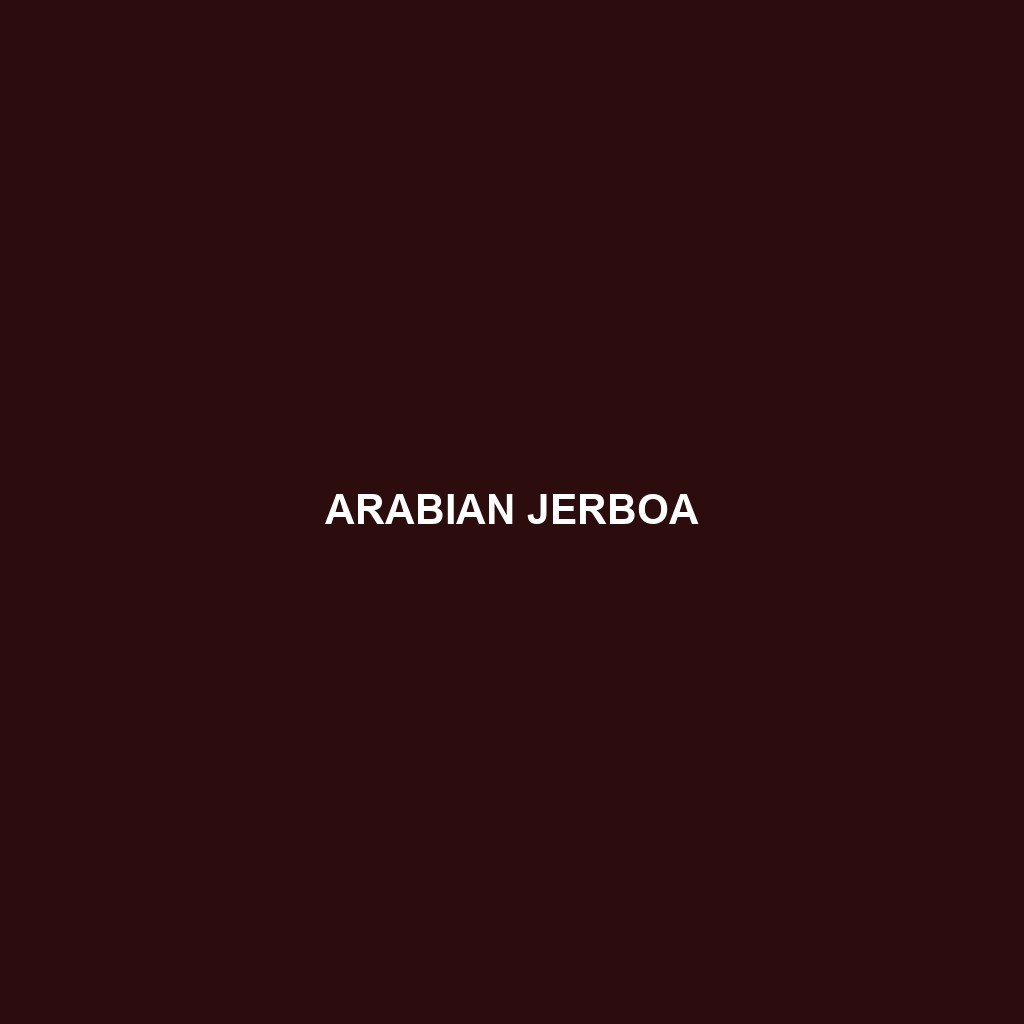Arabian Jerboa – A Unique Desert Dweller
Common Name: Arabian Jerboa
Scientific Name: Jaculus jaculus
Habitat
The Arabian Jerboa primarily inhabits arid desert regions and sparse grasslands across the Middle East, particularly in countries such as Saudi Arabia, Oman, and northern Africa. This species has adapted to survive in extreme climates, preferring sandy soils and areas with limited vegetation, which provide both shelter and food resources.
Physical Characteristics
Arabian Jerboas are medium-sized rodents, measuring approximately 25 to 30 cm in length, including their long tails that can be as long as their bodies. They are characterized by their distinctive long hind legs, which enable powerful jumping, and a small body covered in sandy-colored fur that camouflages them against the desert landscape. Their large ears enhance their hearing, allowing them to detect predators effectively.
Behavior
These nocturnal creatures exhibit a range of fascinating behaviors. Arabian Jerboas are known for their incredible agility and speed, which they use to evade predators and navigate through their arid habitats. They communicate with one another through various vocalizations and body postures. Their burrowing behavior is essential for thermoregulation, providing a refuge from the harsh daytime temperatures.
Diet
The diet of the Arabian Jerboa consists primarily of seeds, grains, and the occasional insect. They are foragers, often scavenging for food during the cooler nighttime hours. Their ability to efficiently store food in their burrows allows them to sustain themselves during food-scarce periods, making them well-adapted to the challenges of their environment.
Reproduction
Arabian Jerboas breed during the warmer months, with a gestation period of about 30 days. Females typically give birth to two to four pups, which are born hairless and helpless. Parental care is exhibited as the mother nurses her young until they are capable of independent foraging, approximately one month after birth.
Conservation Status
The Arabian Jerboa currently holds the status of “Least Concern” on the IUCN Red List. However, habitat loss and degradation due to urbanization and agricultural expansion pose potential threats to their populations. Continuous monitoring is essential to ensure their long-term survival in an ever-changing environment.
Interesting Facts
The Arabian Jerboa can leap up to 3 meters in a single bound, making it one of the fastest jumpers among rodents. Their unique adaptations, such as the ability to go several days without water, showcase their remarkable resilience in harsh desert climates.
Role in Ecosystem
As a seed disperser, the Arabian Jerboa plays a vital role in its ecosystem, aiding in plant propagation. Its population dynamics are also significant for maintaining the food web, as they serve as prey for various desert predators, including birds of prey and small carnivores. The presence of this species indicates a healthy desert ecosystem, contributing to biodiversity conservation.
